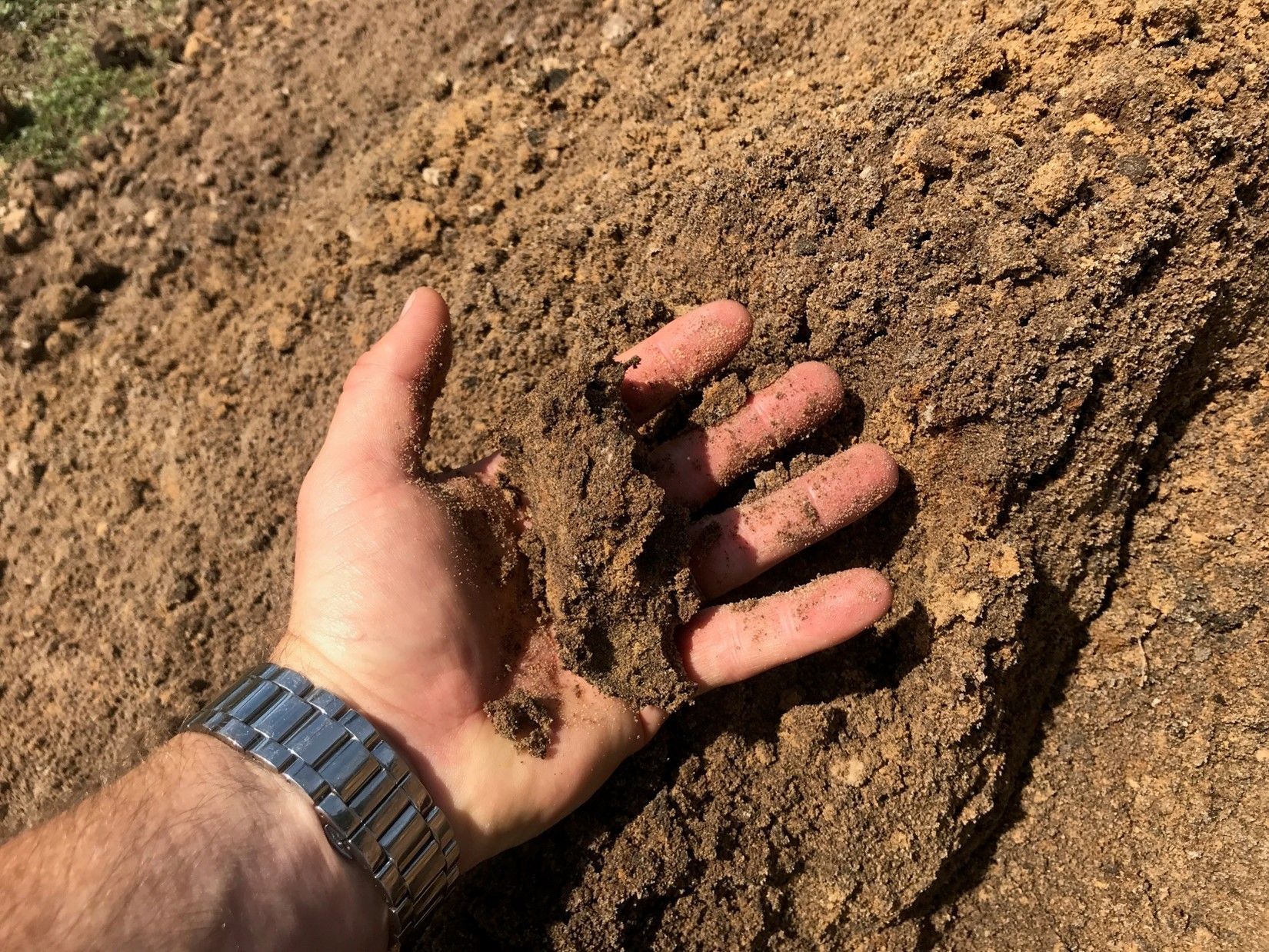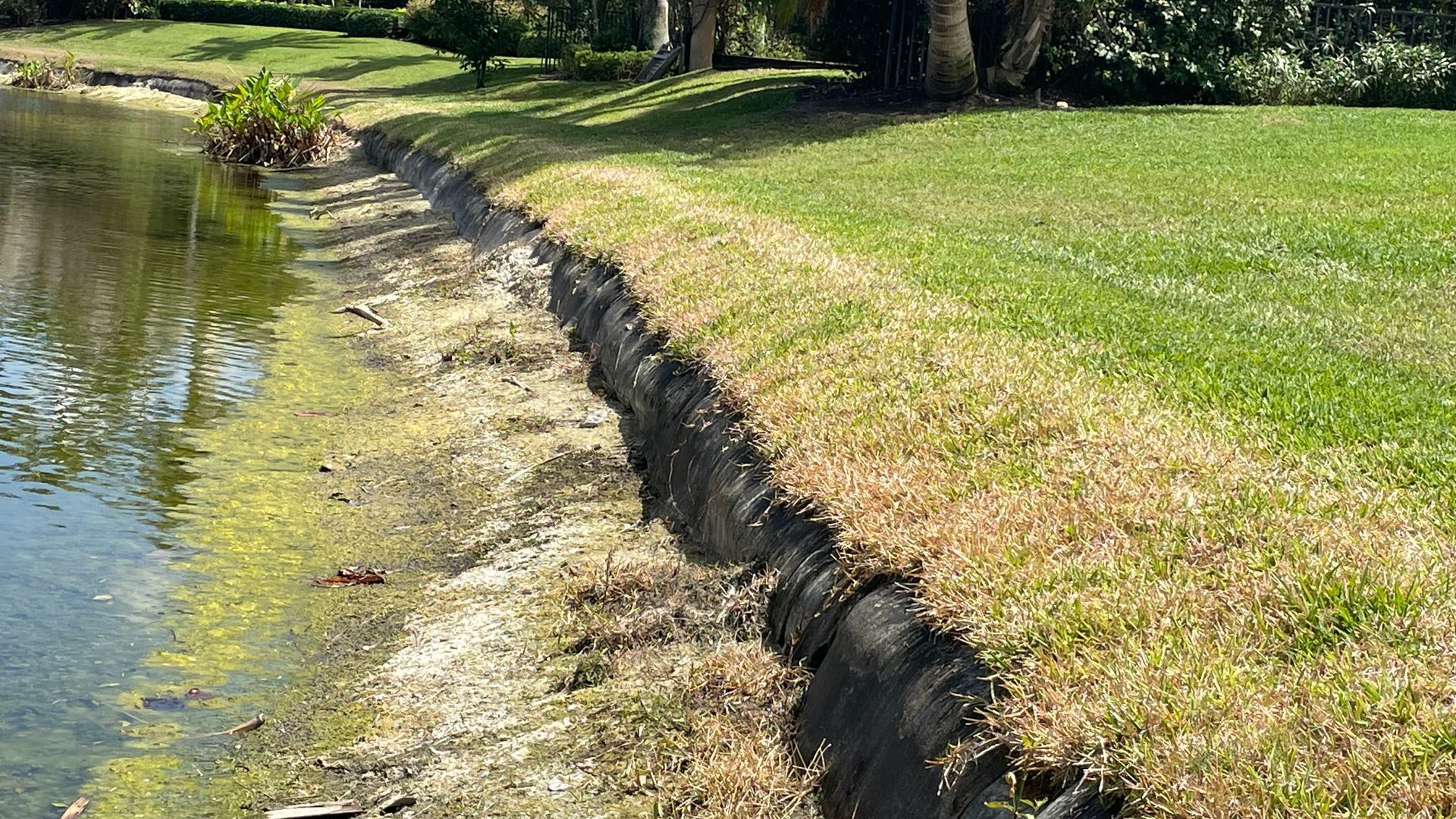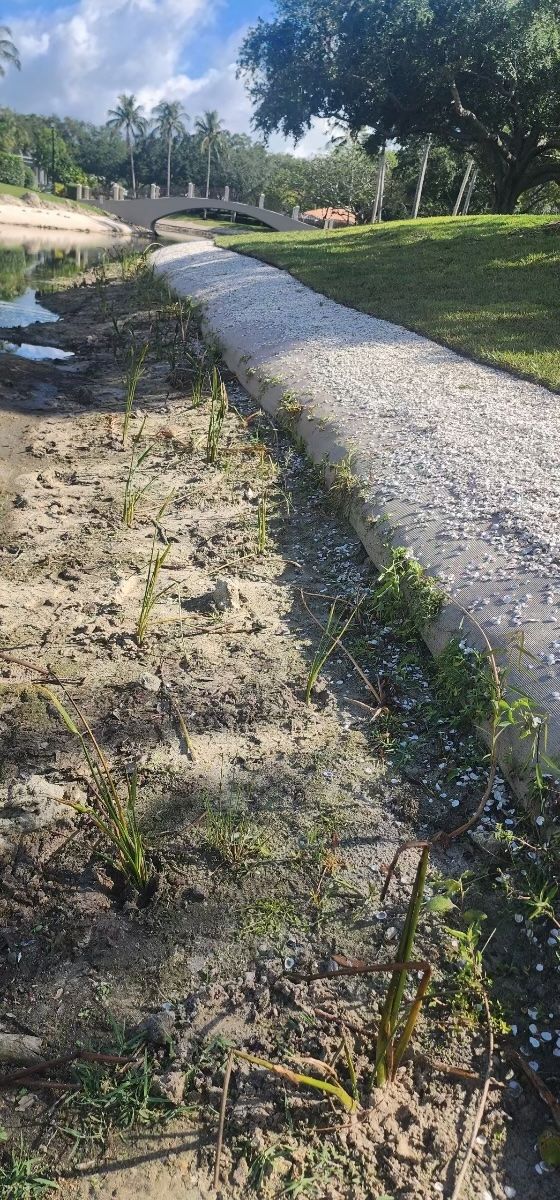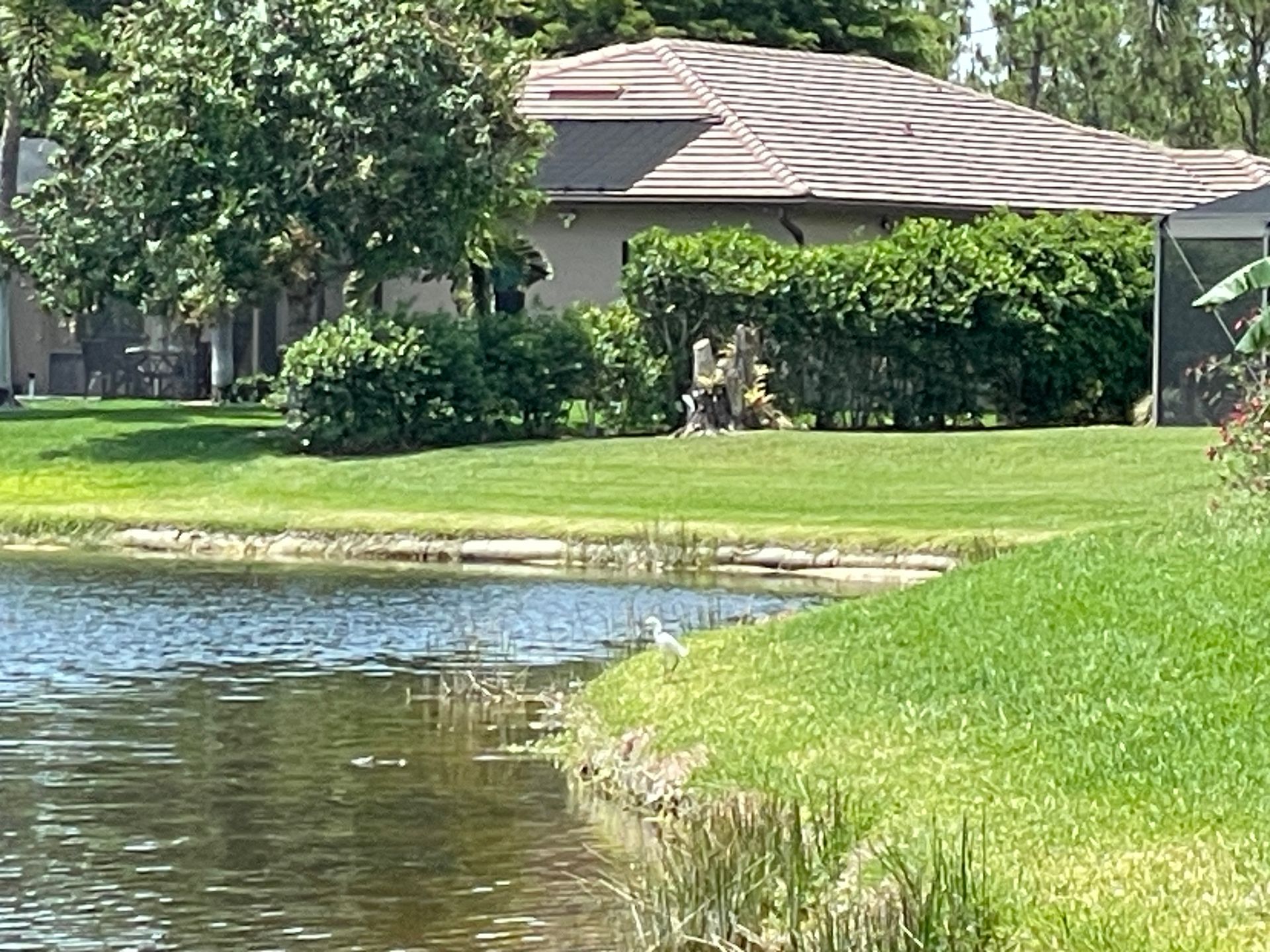Soil Composition
Soil composition has a large influence on erosion- namely how fast it occurs and the specific type of erosion that you can expect. Soil is different depending on where in the United States you are. Soil in Hawaii is much different than soil in Oregon or Florida. Here in south Florida, our soil is mostly comprised of sand, shell, rock, silt, and some organic matter. Even within Florida, soil composition varies from region to region, county to county. With regard to erosion, we are able to analyze the “eroded material” that falls downward on a shoreline or lake bank into the water. Generally, silt is the first component to erode because it is the finest particulate. Then, fine silica sand is the next to erode. So, if a planned community is built in an area with high silt or silica content in its soil it will be more prone to erosion when water comes into contact with it.
It is important to use the correct aggregate, or aggregate blend, when repairing diagonal eroded slopes, banks, and culverts. An aggregate with a clay or organic binder typically compacts well and acts as a good sub-grade (the ground underneath the final covering). Dredging the silt and muck from the bottom of a lake is not a good practice. You are removing and reusing the same exact material that eroded in the first place! Some will make the assertion that “you need to reclaim the eroded material, instead of adding material to the lake which is a bad practice”. Although adding imported material onto the shoreline may alter the volume of the lake, the degree in which it is altered is negligible and thus has no effect on the lake’s ecology, water quality, flora, or fauna.

Above picture: A very dark aggregate blend that contains organic and clay binders is most the effective when trying to stop erosion.
Since soil composition has such a large influence on erosion one lake in a community may be healthy with little erosion, while another lake in a neighboring community may be unhealthy with much erosion. If you want to determine the health of your native soil around your lake, pond, river, or canal, simply go out and grab a handful of dry soil, crumble I up, and release it. If you see a lot of white sand that has the appearance of beach sand, you likely have a high silica content and should think about protecting your shoreline from erosion as soon as possible. If the soil compacts and becomes clumps in your hand, you probably have soil with more clay, organic matter, or other binders in it which would mean your shorelines are less susceptible to erosion.
Imported soil that is used to restore a shoreline should be graded (smoothed and leveled by machine) and then compacted by hand or by machine to around 90-95% compaction (each cubic inch of soil would have just 5-10% of air, or void, inside of it). This compaction encourages water to wash over the aggregate without taking much aggregate with it (erosion). Think of a slip-and-slide… it wouldn’t work very well if the plastic slide part had a bunch of holes in it.
The study of water’s effect over land is called hydrogeology. We go into depth more on that in another article.
Recent Posts






